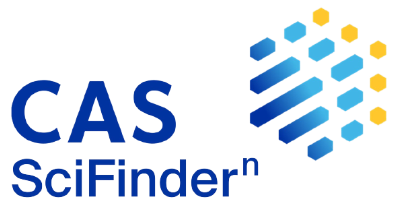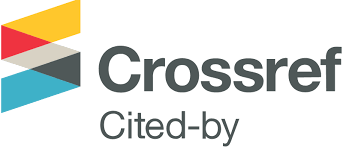Application of thin layer chromatography and color tests in the analysis of metronidazole
DOI:
https://doi.org/10.24959/ophcj.18.957Keywords:
metronidazole, thin layer chromatography, color testsAbstract
Metronidazole belongs to the group of antiprotozoal medicines and is a potential object of research in various areas of analytical toxicology.
Aim. To study the metronidazole behavior when developing with color reagents generally accepted and to determine Rf values of metronidazole under chromatographing conditions in the solvent systems generally accepted in forensic toxicology.
Results and discussion. It has been shown that such widely used color reagents as UV-light, iodine vapor, Wagner reagent, acidified iodoplatinate solution can be used for detecting metronidazole on chromatographic plates. Metronidazole gives positive detection results with reagents used in the TLC-screening of extracts from the biological material for substances of basic, acid and neutral nature. It has been proposed to develop metronidazole with the neutral ninhydrin solution, p-dimethylaminobenzaldehyde solution and hydrochloric acid vapors, as well as acidified iodoplatinate solution after keeping the plates in formalin vapors. The chromatographic mobility of metronidazole has been studied in 17 solvents systems; the systems are used as standard mobile phases according to recommendations of the International Association of Forensic Toxicologists for TLC-screening of organic compounds of acid, neutral and basic nature, in the general TLC-screening of organic substances in the Ukrainian forensic toxicological laboratories, and some systems investigated with the purpose of choosing the optimal individual solvents systems for the metronidazole study.
Experimental part. The chromatographic plates Sorbfil® PTLC-IIH-UV and Merck® TLC SILICA GEL 60 were used as thin layers.
Conclusions. The behavior of metronidazole when developing on TLC-plates with two types of a substrate (plastic and glass) and with/without luminophor (or UV-indicator) with commonly used colored reagents has been studied. The Rf values of metronidazole under chromatographing conditions in the standard solvent systems used for TLC-screening of organic compounds of acid, neutral and basic nature have been determined.
Downloads
References
- Brook, I.(2016). Spectrum and treatment of anaerobic infections. Journal of Infection and Chemotherapy, 22 (1), 1–13. https://doi.org/10.1016/j.jiac.2015.10.010
- Lamp, K. C., Freeman, C. D., Klutman, N. E., & Lacy, M. K. (1999). Pharmacokinetics and Pharmacodynamics of the Nitroimidazole Antimicrobials. Clinical Pharmacokinetics, 36 (5), 353–373. https://doi.org/10.2165/00003088-199936050-00004
- Sobel, R., & Sobel, J. D. (2015). Metronidazole for the treatment of vaginal infections. Expert Opinion on Pharmacotherapy, 16 (7), 1109–1115. https://doi.org/10.1517/14656566.2015.1035255
- Pasupuleti, V., Escobedo, A. A., Deshpande, A., Thota, P., Roman, Y., & Hernandez, A. V. (2014). Efficacy of 5-Nitroimidazoles for the Treatment of Giardiasis: A Systematic Review of Randomized Controlled Trials. PLoS Neglected Tropical Diseases, 8 (3), 2733. https://doi.org/10.1371/journal.pntd.0002733
- Breccia, A., CavalIeri, B., Adams, G. E. (1982). Nitroimidazoles: Chemistry, Pharmacology, and Clinical Application. Plenum Press,New York.
- Moreno, S. N. J., & Docampo, R. (1985). Mechanism of Toxicity of Nitro Compounds Used in the Chemotherapy of Trichomoniasis. Environmental Health Perspectives, 64, 199–208. https://doi.org/10.2307/3430010
- Noureldin, M., Krause, J., Jin, L., Ng, V., Tran, M. (2010). Drug-Alcohol Interactions: A Review of Three Therapeutic Classes. U.S. Pharmacist, 35 (11), 29–40.
- Karamanakos, P. N., Pappas, P., Boumba, V. A., Thomas, C., Malamas, M., Vougiouklakis, T., & Marselos, M. (2007). Pharmaceutical Agents Known to Produce Disulfiram-Like Reaction: Effects on Hepatic Ethanol Metabolism and Brain Monoamines. International Journal of Toxicology, 26 (5), 423–432. https://doi.org/10.1080/10915810701583010
- Cina, S. J., Russell, R. A., & Conradi, S. E. (1996). Sudden Death Due to Metronidazole/Ethanol Interaction. The American Journal of Forensic Medicine and Pathology, 17 (4), 343–346. https://doi.org/10.1097/00000433-199612000-00013
- Commission Regulation (EU) №37/2010 of 22 December 2009 on pharmacologically active substances and their classification regarding maximum residue limits in foodstuffs of animal origin. (2010). Official Journal of the European Union, 15, 1–72.
- Rose, M. D., Bygrave, J., & Sharman, M. (1999). Effect of cooking on veterinary drug residues in food Part 9.† Nitroimidazoles. The Analyst, 124 (3), 289–294. https://doi.org/10.1039/a809062i
- Moffat, A. C., Osselton, M. D., Widdop, B. (2011). Clarke’s analysis of drugs and poisons in pharmaceuticals, body fluids and postmortem material. Pharmaceutical Press,London, 4th ed.
- Jickells, S., Negrusz, A. (2008). Clarke’s Analytical Forensic Toxicology. Pharmaceutical Press,London,Chicago.
- Shkarlat, G. L., Klimenko, L. Yu., Shovkova, Z. V., Havrysh, N. B., Lebedynets, V. O. (2018). Modelling the processes of sample preparation of biological objects for the subsequent determination of metronidazole. Journal of Pharmaceutical Sciences and Research, 10 (3), 474–480.
Downloads
Published
How to Cite
Issue
Section
License
Copyright (c) 2018 National University of Pharmacy

This work is licensed under a Creative Commons Attribution 4.0 International License.
Authors publishing their works in the Journal of Organic and Pharmaceutical Chemistry agree with the following terms:
1. Authors retain copyright and grant the journal the right of the first publication of the work under Creative Commons Attribution License allowing everyone to distribute and re-use the published material if proper citation of the original publication is given.
2. Authors are able to enter into separate, additional contractual arrangements for the non-exclusive distribution of the journal’s published version of the work (e.g., post it to an institutional repository or publish it in a book) providing proper citation of the original publication.
3. Authors are permitted and encouraged to post their work online (e.g. in institutional repositories or on authors’ personal websites) prior to and during the submission process, as it can lead to productive exchanges, as well as earlier and greater citation of published work (see The Effect of Open Access).














